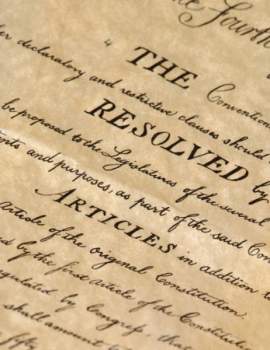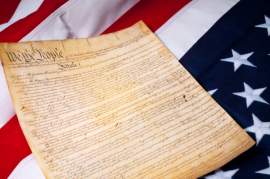
What You Need To Know About Judicial Leanings

Popular In Constitution
Purpose Of Lifetime Appointment And Pros And Cons Enumerated Powers Bicameral Legislature Background Article 3 Of The Constitution We The People 1st Amendment Who Wrote The Constitution Judicial Review Equal Protection Clause Three Fifths Compromise 5th Amendment 10th Amendment
As it is enacted by the Constitution, the Supreme Court and the American judicial system as a whole can be interpreted in theory as the least politicized section of Government and the one most purely given over to procedural, essentially technical questions rather than ideological and philosophical ones. A Federal judge differs from members of Congress and the President in gaining his or her office through appointment rather than election, and in that way is secured against the shifting judgments of the electorate. Similarly, the right to a lifetime term enjoyed by members of the Supreme Court assures that their influence over the judicial system can outlast what are sometimes pictured as the essentially fickle currents of politics.
In practice, however, the question of so-called judicial leanings of any given Federal judge have become increasingly urgent questions over the course of American history. Today, political and legal commentators commonly assign Supreme Court members a place along a right-left political spectrum, and thus, assess their probable impact on the judicial system.
In determining the ideological orientation of the Supreme Court as
it is currently formed, the views of the individual members of the bench will
be taken into account along with the ideology of the Chief Justice. While the
former question is commonly tracked in terms of a shifting balance of political
power, as one Federal judge retires or dies and is replaced by another, the
politics of a Chief Justice are often used to place an overall ideological
stamp on a period.
The leanings of the American
judicial system in the post-World War II period, for instance, were typified by
the readiness of the Warren (1953-1969)
and Burger (1969-1986) courts to use the
judicial system to accomplish liberal initiatives judged too contentious to
enact through legislation, including Federal action against racial segregation
and the availability of abortion. The Rehnquist (1986-2003) and Roberts (2003-present) courts, by
contrast, have been seen as more conservative in their judicial leanings and
linked to the general rightward shift some commentators believe has occurred in
American politics as a whole.
The specific nature of the duties required by the
judicial system means that the liberalism or conservatism of any given Federal
judge will likely operate differently than it would in the legislative or
executive branch. For all of the importance placed on the nomination or defeat
of candidates for Federal Justice on the Supreme Court, Democrats and
Republicans do not formally endorse their favored choice.
Though theoretical questions arising from the American judicial system may carry implications for the nation as a whole, they do not refer ultimately to the desires of interest groups or other common sources for legislative action, but rather to Constitutional interpretation. In this sense, the ideological split in Supreme Court decisions, though present, has been generally observed to occur with far less consistency than is the case in Congressional votes. The question of the judicial leanings of a Federal judge in this sense can be a more nuanced question than it is in regard to legislators.
NEXT: Who Is Earl Warren





















